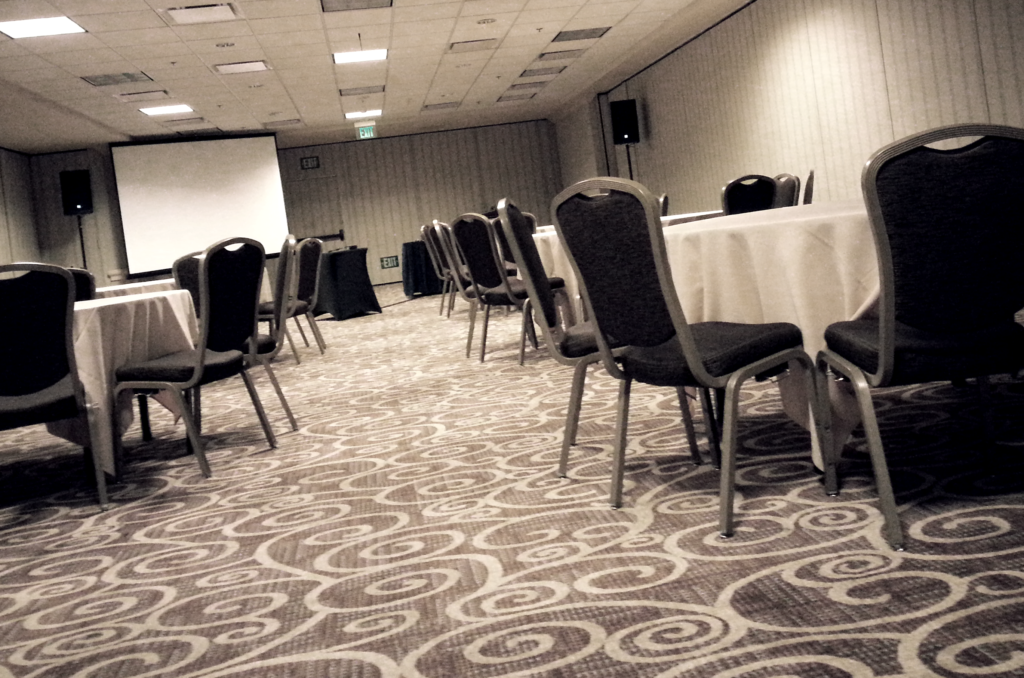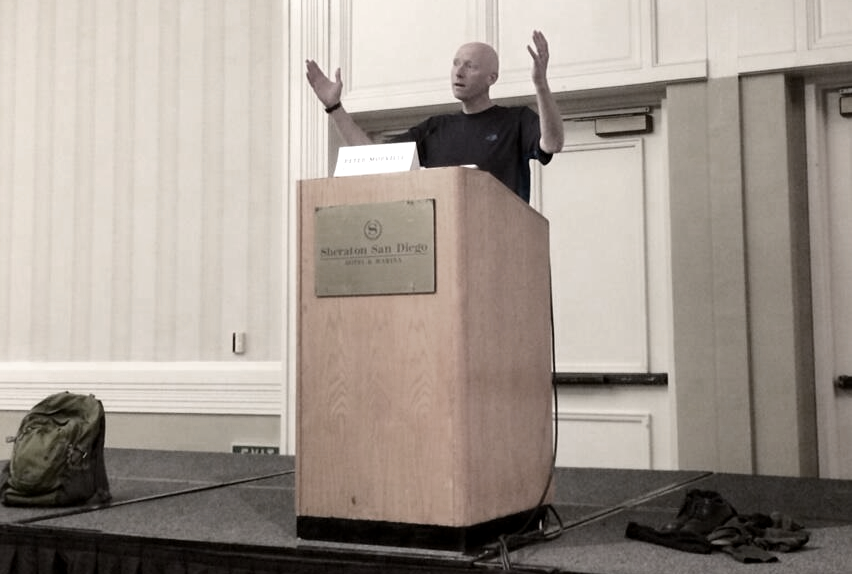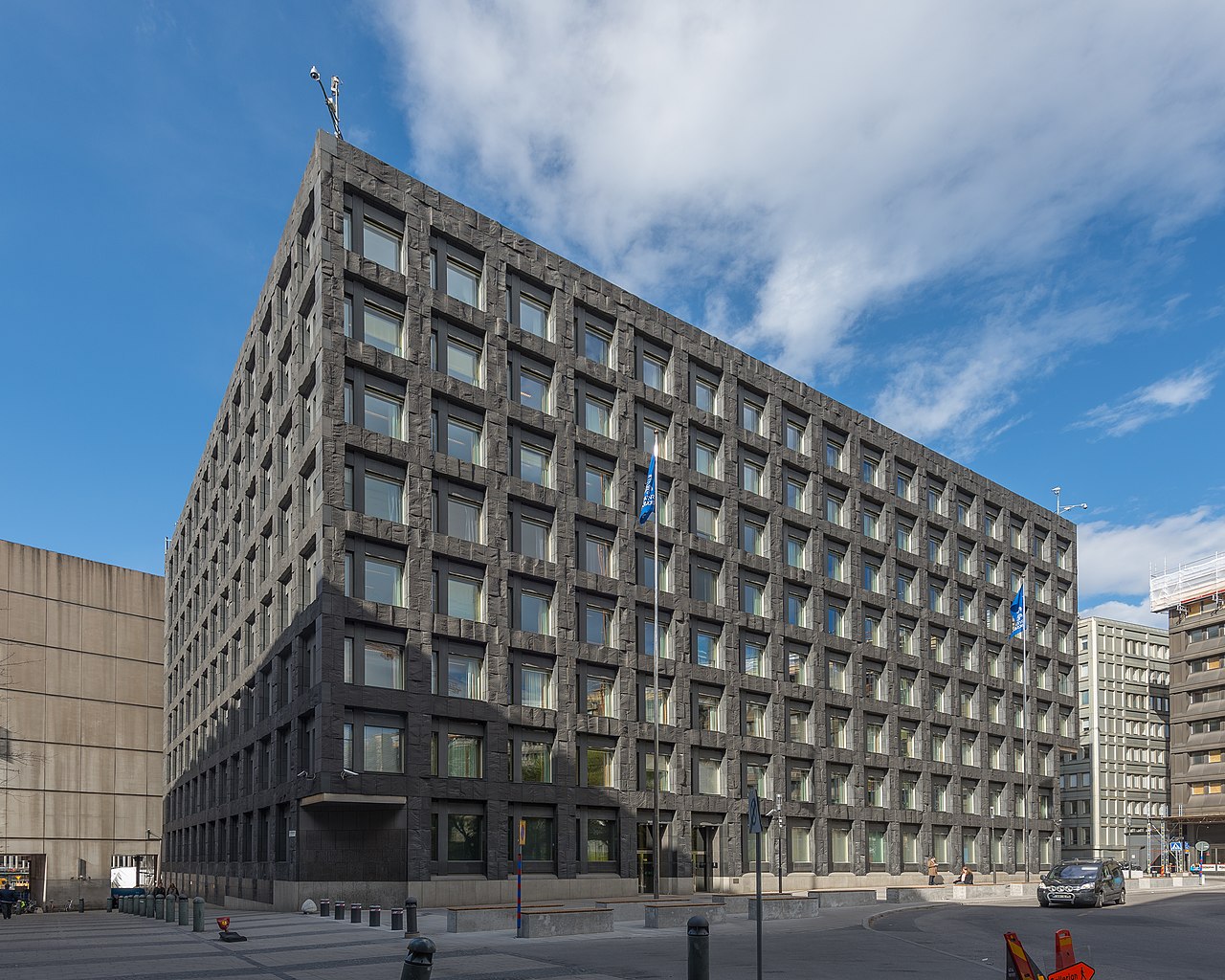Assistant professor in informatics, information architect, designer, piano player, author.
The Seduction of Semantics and the Third Wave
The Information Architecture Summit 2014 is over. And it’s been a success. It had everything you would want a conference to have: a brilliant, engaged crowd, amazing networking, great talks, plenty of social events, nightly runs across the Mexican border. As far as I know, you can’t read about Mexico, but you can read about the talks, the community, the field, the things you do in San Diego, and you can read Peter Merholz saying he liked the Summit very much thank you.

Me, I loved it too, but I had to leave early so I wasn’t around for both Paul Dourish and Peter Morville’s final keynotes, let alone for Mexico. And while I still have to get to Dourish’s materialities of the digital, something I’m seriously interested in catching up with, I read Peter’s transcript as soon as I was off the plane and, very unsurprisingly, found out it was an inspiring, come-together talk.
I loved how Peter brought in hiking and centered sets, Bowker and Starr and Life of Pi, and still managed to say what he wanted to say straight and simple (that information architecture contains multitudes? Possibly.), but it would be dishonest to hide I have one issue with it, and it has nothing to do with going bald or with pants (if you’re curious, read the full piece): I think in one crucial passage Peter falls victim to the seduction of semantics that seems to be an enduring characteristics of the community. Here’s the text I’m referring to:
In case you hadn’t noticed, it’s open season on polar bears, and that’s okay, but really folks, you don’t need a gun. As I said, this game’s not zero sum. The structuring and organizing of websites is more complex and vital than ever before, but our practice is already so much more. Perhaps instead of “re-framing” we should be “un-framing” information architecture. Our schools of thought aren’t mutually exclusive. There’s no need to be limited to one.
It might very well be that I’m over-sensitive to the subject as I’ve been one of the people pushing for the “re-framing” Peter mentions there, but I still think that, this being the keynote and this being the Summit after all, these lines deserve some comment. Mostly because this seems an unnecessary dance and play with words: we absolutely agree that the conversations we are having on these topics, what is information architecture today and what is the nature of what we do, do not amount to a zero-sum game.
Architects didn’t stop making houses or thinking about houses when skyscrapers became a possibility: photography moved art into abstract first, but then to photorealism and hyperrealism. People still paint. Websites are still pretty much a part of the practice and theory of information architecture, they just don’t, as Peter correctly notices, resolve all we do. They are a possible outcome, not the practice itself. As such, they should not be used, as I say elsewhere, to define the boundaries of the field.
Then comes the bit I find puzzling: that perhaps we should “un-frame” information architecture, instead of “re-framing” it. This is the seduction of semantics dancing in. First things first: “we should <do something>” plays straight against “we have been <doing something>”. Quite a lot of thinking and making has already piled up into the reframing bucket in the past three years. Workshops, articles, talks, books, case-studies, deliverables, tools. This of course doesn’t imply we should stop there, or refrain from suggesting critical reflection, but is this differentiation here going to make any positive difference?
Maybe this simply didn’t make it to the text and was instead crystal clear to those in the room, but I find it hard to understand where any line could be drawn. What is the difference between ”re-framing” and ”un-framing”? The text does not say, and in the end it feels like we are just playing with words.
Anyone somehow pushing the boundaries of the field would be reframing the field. If that ends up being an unframing, supposedly removing frames and boundaries which were in place before as “(n)obody understands information architecture (and) we don’t even know what it is”, that’d still be an act of re-framing, since we had frames before, those saying that information architecture is all about websites and taxonomies and not particularly useful for anything since 2005.

This leads me to the final point: schools of thought. The very idea of “schools of thought” implies more than one of them is simultaneously represented. I’d probably argue information architecture has always had them. If we consider classical information architecture, schools of thought are easily identifiable: the Polar Bear book representing mainstream LIS information architecture in respect to the more designerly approach followed by “Elements” or “Blueprints” (or the business-savvy take of a Peter Van Dijck).
The topic has been floating around in conversations in connection to “re-framing” since New Orleans 2012, and really started to get some attention in Baltimore 2013. Schools of thought are clearly there: they are a good thing, a sign of maturity, a boost to constructive confrontation, and definitely not mutually exclusive. And nobody so far has a clear idea of where we can draw lines in there as well: Nate Davis has given the topic some thought and produced a poster where he outlines his take. That’s his research, and I’m more than happy to find things in there I agree with, and others I don’t agree with (for what is worth, I don’t consider myself part of a “pervasive” school of thought: me and Luca put “Pervasive” in the title of our book because that addressed the change and made it visible, not because we thought we were forking into a new sect. I come at IA from embodiment and architecture. I also see differences that Nate doesn’t consider. Then again, this is what critique is all about, isn’t that so?).
But none of the people Peter mentions in his keynote are hunting Polar Bears. Peter knows that well. I wrote it in my response to Matt Nish-Lapidus on this blog a few weeks ago: I see continuity. This is “still” information architecture. The only real difference is in how we broke free of the frame and we can now see its broader strategic side, its medium- or channel-aspecific nature. And we agree on this.
If there’s a third wave, a new spirit, a <enter-your-preferred-semantic-variation-here>, it’s because we can build on 20 years of continuous practice and research and some 40 years of framing a common problem space. We are as much moving on as we are bringing it all back home: it’d be great if we could do that without paying too much attention to the sirens of unnecessary semantics. It’s a waste of time and we have a ton of work to do.
(Credits for the keynote image go to Chris Farnum, https://twitter.com/crfarnum/status/450397441813000192)
Detta är en bloggtext. Det är skribenten som står för åsikterna som förs fram i texten, inte Jönköping University.





